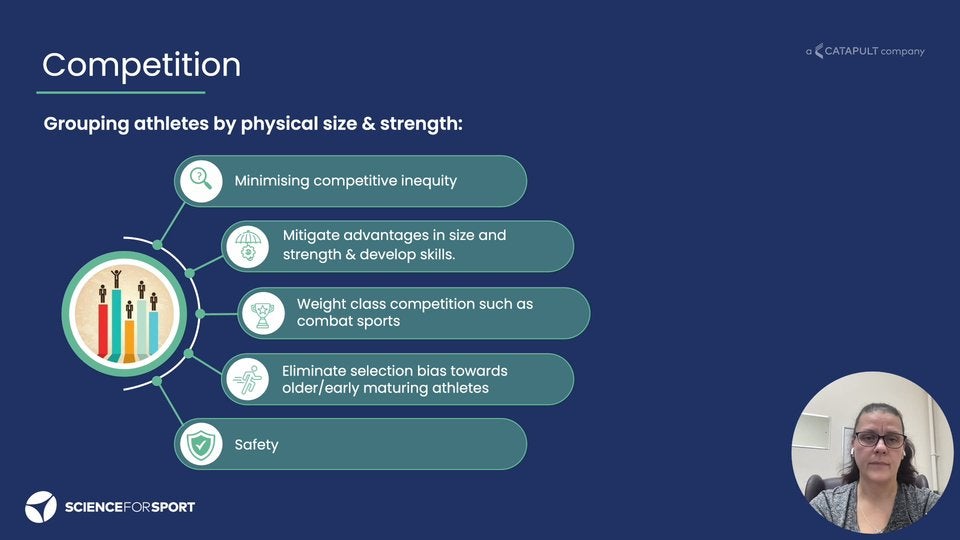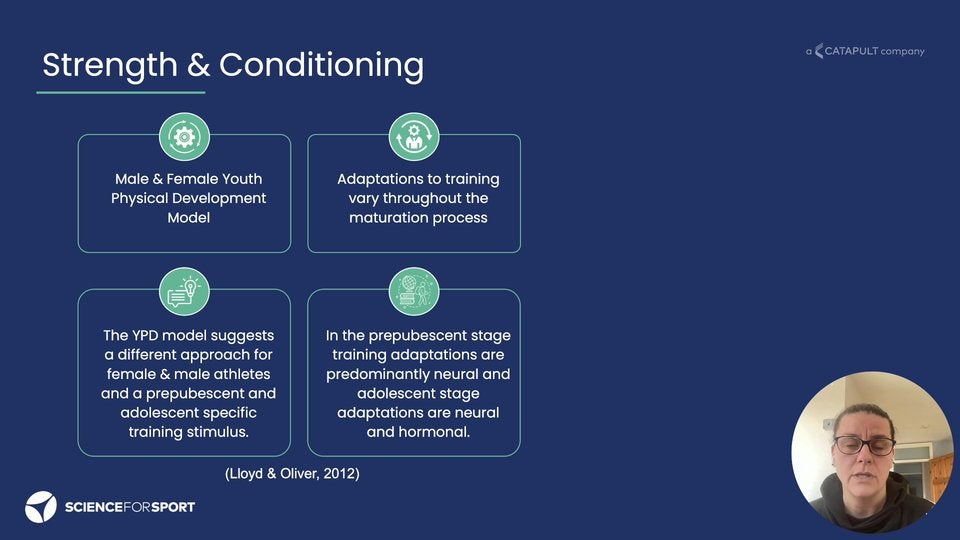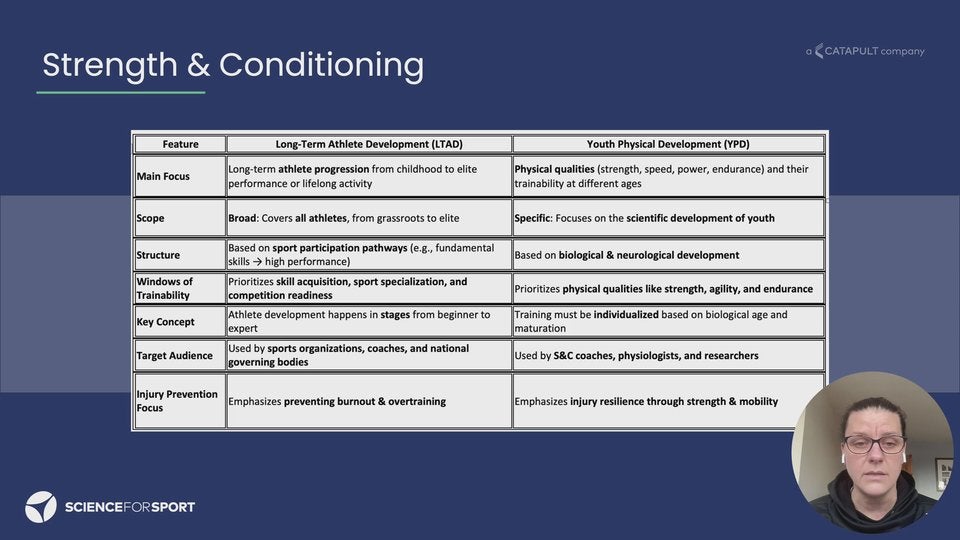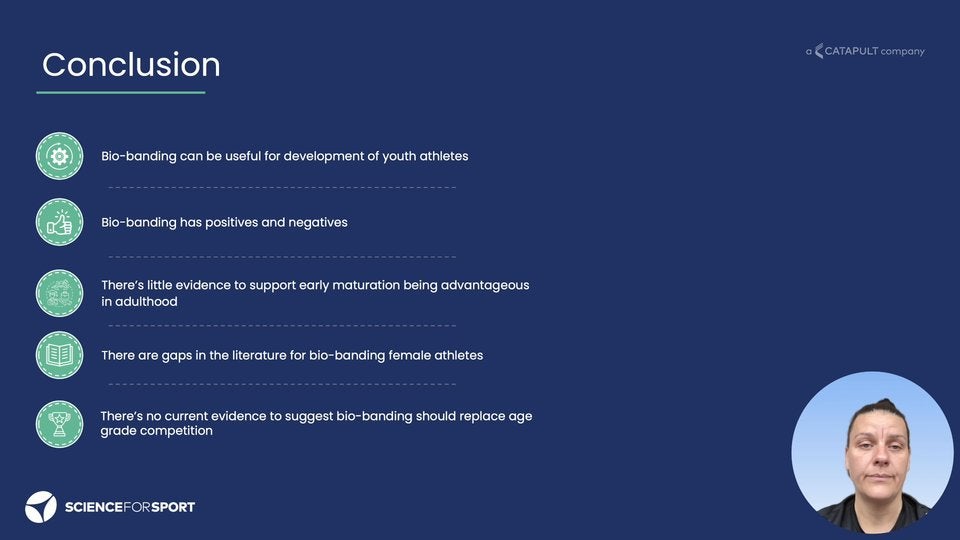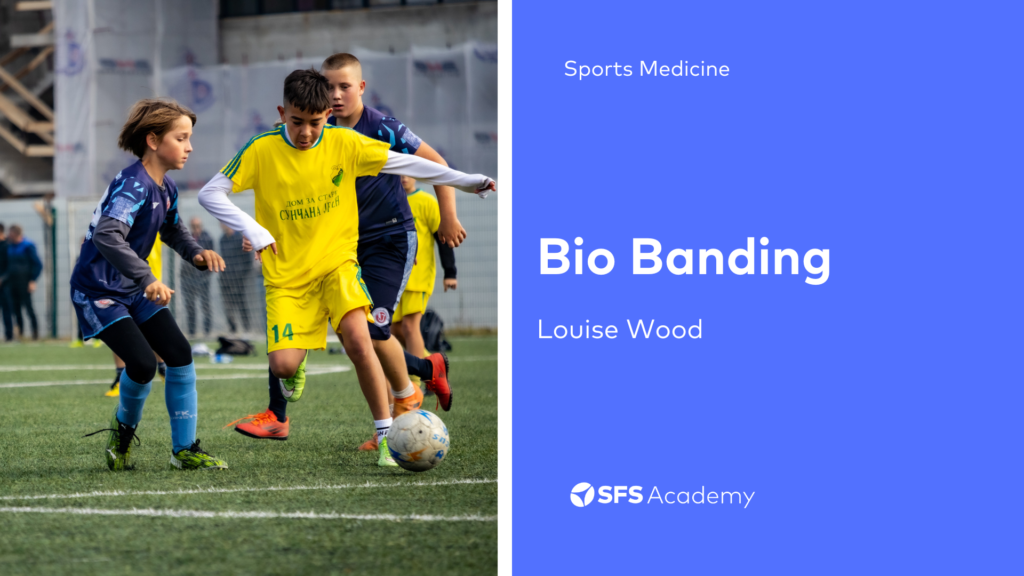
Collection
Bio Banding
This mini course provides a comprehensive introduction to bio-banding—grouping young athletes based on biological maturity rather than chronological age. Designed for coaches, sport scientists, and academy staff, the course explores the theory, application, and benefits of bio-banding within youth development systems.
Participants will gain insights into:
- The science of growth and maturation, including the processes of skeletal, somatic, and sexual maturation and how they impact physical performance and training response.
- Peak Height Velocity (PHV) and its role as a key indicator of maturation, along with how to monitor, predict, and apply it within a team setting.
- The differences in maturation patterns between males and females, and how these impact training prescription, recovery, injury risk, and competitive fairness.
- The application of bio-banding in training and competition, including how to structure sessions, select appropriate drills, and manage mixed-maturity groups effectively.
- The influence of biological maturity on talent identification, retention, and deselection — and how to use bio-banding to reduce bias and improve long-term player development outcomes.
- Athletic development models based on both chronological and biological age, highlighting where traditional age-grouping falls short and where bio-banding adds value.
- The benefits and challenges of bio-banding, including ethical considerations, communication strategies, and how to balance technical, tactical, and physical development goals within a maturation-aware framework.
By the end of the course, participants will:
- Understand how to incorporate bio-banding principles into their existing training, competition, and S&C programmes
- Be able to interpret maturity data and apply it to talent ID, injury prevention, and load management strategies
- Develop a clear action plan to implement or enhance a bio-banding framework within their academy or youth performance setting
This course is ideal for those working in structured LTAD environments and seeking to create a more individualised, fair, and developmentally appropriate experience for young athletes.
Videos (9)




